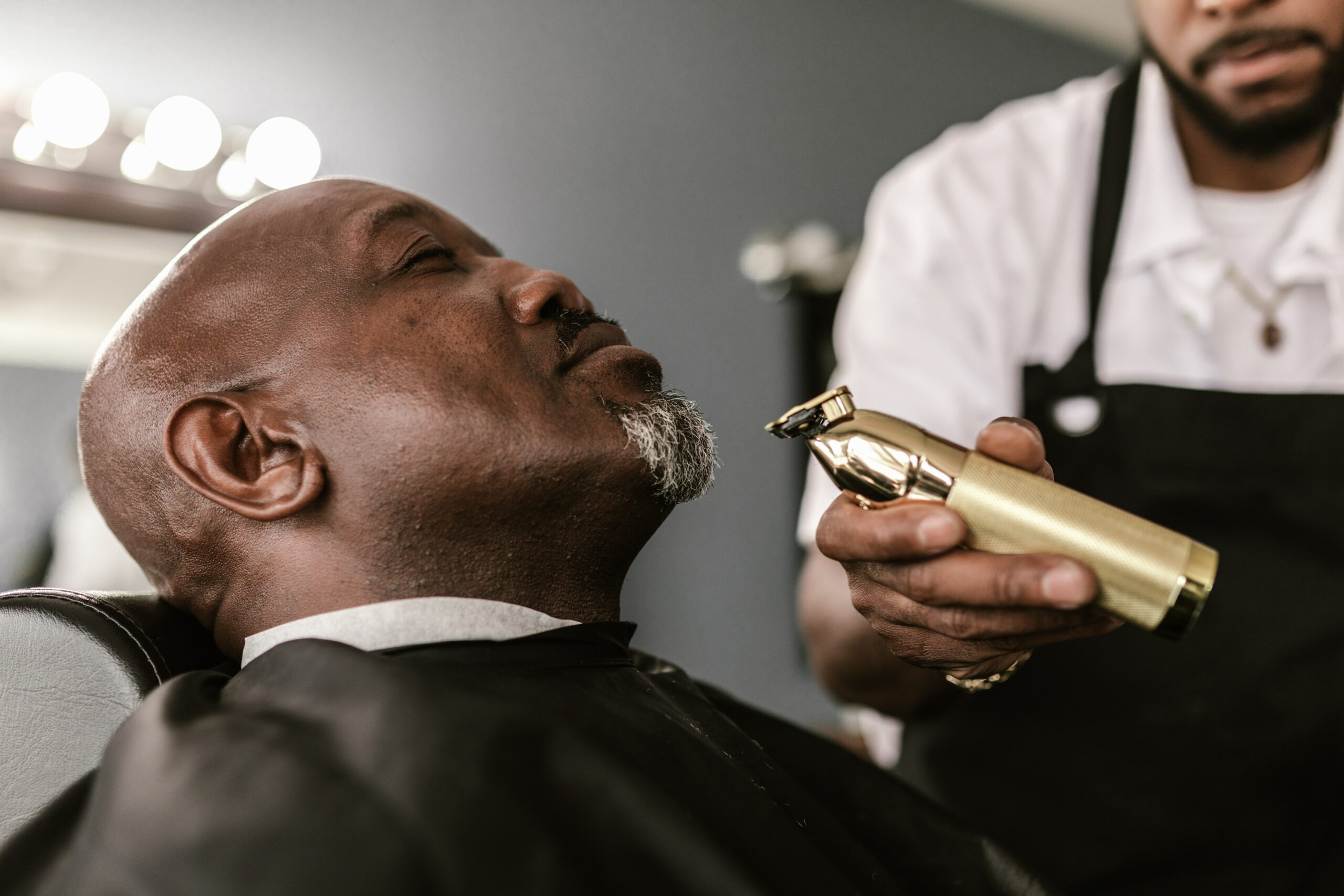
Have you ever noticed bumps on your face after shaving? If so, perhaps you’ve heard of razor bumps and assumed that’s what those little ingrown hair-like cysts were. But were they razor bumps? And what do razor bumps look like on the face?
Razor bumps look like small ingrown hair cysts. They may vary in color depending on a person’s skin tone. Typically, razor bumps are raised and irritated. The skin bump may look red, pink, or a darkened color. Sometimes, they become infected and may look yellow or whitish in the center.
So how do you know if you truly have razor bumps? Moreover, what can you do if it looks like razor bumps on your face? Keep reading if you or someone you know has had these facial bumps and you want to know more.
Razor bumps is the name of a skin problem that shows up on the face and neck after shaving. Usually, these bumps are small. Razor bumps typically measure only 2 to 5 mm in diameter.
If you notice bumps on your face, you can look closely at the face with a mirror. The small cysts will appear near hair roots. Watch for signs of irritation at the hair root. Signs of razor bumps on the face can include:
Facial hairs cut with sharp edges, like a razor blade, can grow back into the skin. As a result, a shiny hump or cyst forms on the face. They are also called shave bumps or barber’s bumps.
Men with coarse or tightly curled hair see razor bumps more often. This hair type grows easily back into the skin after shaving. More than half of African American men have had this condition.
Only a licensed physician can diagnose razor bumps. If you have signs of these barber bumps and they don't go away, it's best to talk to a doctor.
The medical term for razor bumps is Pseudofolliculitis Barbae. Traumatic folliculitis of the beard is another name for it, even though razor bumps can appear in other body parts. The condition is caused by shaving. Hence the name, razor bumps.
Bad shaving habits can worsen razor bumps. For example, pulling the skin tightly or pressing on the razor while shaving can cause hairs to be cut too short. It can aggravate razor bumps. Also, using dull razor blades can cause trauma to the skin. They pull the hair shaft during shaving, which can worsen razor bumps.
Also, men who suffer from razor bumps find that shaving too frequently makes matters worse. If you suspect you have razor bumps on the face, you should avoid shaving the affected area until it is healed.
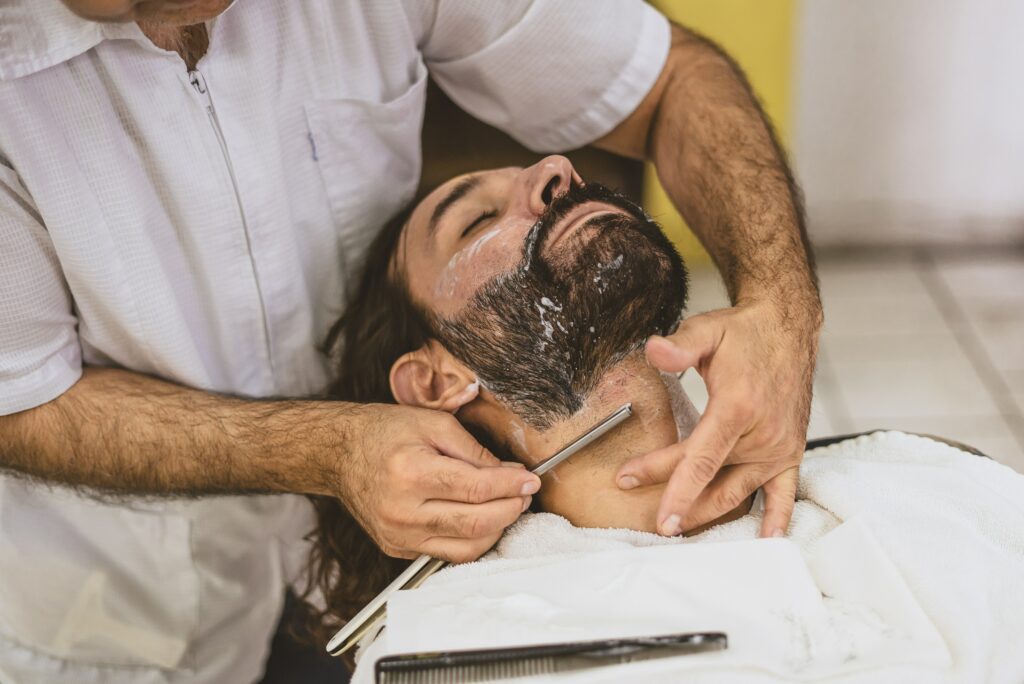
You can do several things if you think you have razor bumps. Some you can do at home by yourself. Others may require you to see a doctor.
The easiest and most effective way to treat razor bumps is to stop the cause of the problem. Yes, you guessed it. That means to stop shaving. Allowing facial hair to grow freely can stop the irritation. According to the American Osteopathic College of Dermatology, letting a beard grow naturally is a 100% effective treatment.
Another solution is to train the hair. Some doctors recommend brushing facial hair to encourage it to grow a certain way. Doing so may decrease razor bumps.
A beard brush can help tame unruly hairs. Starting near the ears and brushing down toward the chin in smooth strokes can encourage hairs to grow out straight. Men should brush face hair at least once a day.
The third solution for razor bumps on your face is to try changing up your shaving routine. Try different products or methods to reduce bumps.
Softening the hairs before shaving in the shower or with a hot wet towel on the face helps. Men can also look for lubricating shave gels or try an electric razor. Different methods can help lessen bumps.
If you try these at-home solutions but still have a hard time with razor bumps, then it might be time to talk to a doctor.
So now you know how to prevent bothersome bumps on your face and how to tell if you’re dealing with razor bumps. The ingrown hair-like cysts on their face can vary slightly from person to person. Still, razor bumps are usually swollen, discolored, and bothersome.
If you are still unsure you have razor bumps on your face and want to talk to an expert, go ahead and chat with us to find out more about Razorbumps, Inc. We have top board-certified physicians available to see and treat your skin problem by video appointment now. To find out more, click BOOK APPOINTMENT.
Disclaimer: The contents of this article are for informational purposes only and do not constitute medical advice. The information, graphics, and images on this site are not intended to substitute diagnosis or treatment by a medical professional. Always seek the advice of a licensed physician for any questions you may have regarding a specific condition.
Some employers require shaving. A clean-shaven face is part of the uniform. Many law enforcement jobs prohibit beards. So it’s normal to wonder - can you have a beard as a security guard?
Typically, security guards or security officers must maintain a professional appearance on the job. Often that means a shaven face or well-groomed beard. Security guards can be excused in some cases, such as religious or medical exemptions.
If you’re thinking about a security job but cannot shave due to personal beliefs or skin problems, here’s what you should know.

The truth is that each business has different requirements for grooming and appearance. Employers want to put their best face forward. And when it comes to providing security, men are expected to appear respectable and professional.
Here are some of the rules from top names in private security:
Most security jobs require shaving as a part of their grooming standards.
Men who cannot shave their facial hair for religious or medical reasons can talk to their supervisor about the process of getting a shaving waiver. To learn about what a shaving waiver is, read more here.
Security guards who suffer from damaging skin conditions with frequent shaving may need a shaving waiver.
A medical excuse is needed in some situations. Shaving weekly may cause security guards to experience:
Not only can these be painful, but they are also unattractive. Symptoms may range from mild to very serious. They can also lead to scarring or other permanent effects.
Security officers who have these problems from shaving should see a doctor. They may need a medical excuse.
Thanks to the internet, seeing a doctor is now easier than ever. And virtual visits online are less expensive than driving to a specialist’s office.
Getting an appointment for a shaving waiver is simple. The first step is to find a doctor. Telemedicine doctors can treat patients through smartphones, tablets, or computers. Seeing an online doctor is the fastest way to get a shaving waiver.
A telemedicine appointment should include a physical exam with the doctor that focuses on the skin problem. The doctor will ask questions about the symptoms. And they may discuss treatment options. After the appointment, the online physician can provide a medical excuse showing why an officer should avoid frequent shaving.
So if you are considering a job in security, now you know what to expect when it comes to shaving. Many employers will have rules about growing facial hair. But you may still be able to grow a beard if there is are medical concerns.
Would you like to talk to a caring doctor about your skin problems? To meet a top board-certified physician, chat with Razor Bumps, Inc. now.
Disclaimer: The contents of this article are for informational purposes only and do not constitute medical advice. The information, graphics, and images on this site are not intended to substitute diagnosis or treatment by a medical professional. Always seek the advice of a licensed physician for any questions you may have regarding a specific condition.
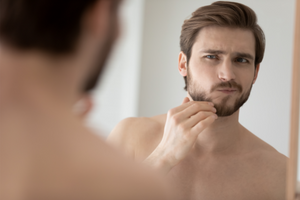
Pseudofolliculitis barbae is a common skin condition that many adults will face at some point in their lives. With so many people affected, you might wonder how it is diagnosed.
Pseudofolliculitis barbae is typically diagnosed by physical examination by a licensed healthcare provider, such as a doctor or advanced nurse practitioner. Medical tests, including studying skin tissue samples under a microscope in a laboratory, may also aid in the physician’s diagnosis.
So how does a doctor examine pseudofolliculitis barbae? And how can someone find a physician to treat this problem? Read on to find out.
Want to speak to a board certified physician? Book an appointment today!
Anyone who shaves is at risk of developing "shave bumps," "razor bumps," or ingrown hairs. But African American men are affected most. Studies show that todate.com/contents/pseudofolliculitis-barbae#H87492034">between 45% and 83% of African American men who shave will develop pseudofolliculitis barbae. Men of other ethnicities and women too can experience this problem. It most often appears in the face but can also show up under the arms, in the bikini area, or the legs.
Physicians or practitioners can diagnose pseudofolliculitis barbae tologic-disorders/hair-disorders/pseudofolliculitis-barbae#v38068013">by physical examination at a simple doctor's visit. With any physician encounter, the first part of the diagnosis will be an interview.
The doctor will ask the patient questions to figure out what is wrong or what the complaint is. Some common questions a provider might ask when diagnosing pseudofolliculitis barbae are:
In addition to taking a history, the doctor will observe the skin for any changes. Small red to-avoid-bikini-line-bumps-2/">bumps, tenderness, and itching are all signs that could alert the doctor to a possible diagnosis of pseudofolliculitis barbae.
Finding a doctor for pseudofolliculitis barbae is easier than ever. A dermatology or skin specialist referral may not be necessary. Many primary care doctors can diagnose and treat this problem with a quick check-up.
There is also good news for patients who do not have a doctor. When someone doesn't have a doctor or is unsure how to find one, a virtual physician is a great option. Online doctor visits are often less expensive than going to a doctor's office. And in many cases, patients can book them faster. Most virtual physicians offer convenient appointment times, and some even have same-day bookings.
Whether online or in-person, it is best to contact the doctor and ask for an appointment to evaluate a skin condition. Give the doctor as much information as possible. If you think it's pseudofolliculitis barbae, then let the provider know when you book your visit.
A licensed healthcare provider is the only one who can say for sure if a skin rash might be a case of pseudofolliculitis barbae or something more serious. Luckily, an appointment to see a physician can be simple and inexpensive. Relief may be as close as a phone call or video visit today.
Our caring experts can help answer your skin questions. To meet a top board-certified physician, book an appointment today.

Day One after shaving, skin feels nice and smooth. So why does Day Three feel bumpy and painful? Is your razor causing the bumps? Well, that is a common question.
Shaving can cause unsightly and bothersome razor bumps. In short, the type of razor and how it is cared for certainly contributes to skin irritation. Hence, changing your razor can reduce razor bumps and improve the skin’s appearance.
To find out which razor you should be using and how to care for it, read on.
Razor bumps is a term that is used to describe the skin irritation that commonly appears 2-3 days after shaving. Men may see this condition on their faces, while women can experience razor bumps from to-avoid-bikini-line-bumps/">shaving the bikini area. Essentially anyone using a razor for hair removal is at risk for razor bumps.
There are many types of razors available today. Each type of razor is different in terms of cost, convenience, and use. Here are some pros and cons of the common types of razors for shaving.
| Type of Razor | Pros | Cons |
| Electric Razor | Faster shave Convenient for on-the-go use Wet or dry | Requires batteries or power More expensive Requires maintenance/cleaning |
| Straight Blade | Lower risk of skin irritation No pulling/tugging at the follicle Better precision | Most expensive The learning curve to use Takes more time to shave and requires products |
| Disposable cartridge, double or triple blade | Easy to use Easy to replace Less expensive Closer shave | Risk of nicks/cuts Replace after 4-5 uses Going over areas repetitively increases skin irritation |
The key to selecting a razor that won't cause bumps is to consider how the razor works.
Most electric razors snip hairs off between multiple rotating blades. Some may pull or tug the hair, which can irritate the follicle. Pulling hairs before cutting also means that blades will release the hairs below the skin's surface. While that can mean a close shave, it can also be a problem. Growing under the surface may lead to ingrown hairs.
Choosing a razor with the least number of blades will help reduce razor bumps too. Disposable razors with two or three blades usually work by catching the hair on the first blade and cutting it off with the second blade. A single-blade and straight razors allow a clean cut without tugging hair or leaving a jagged edge.
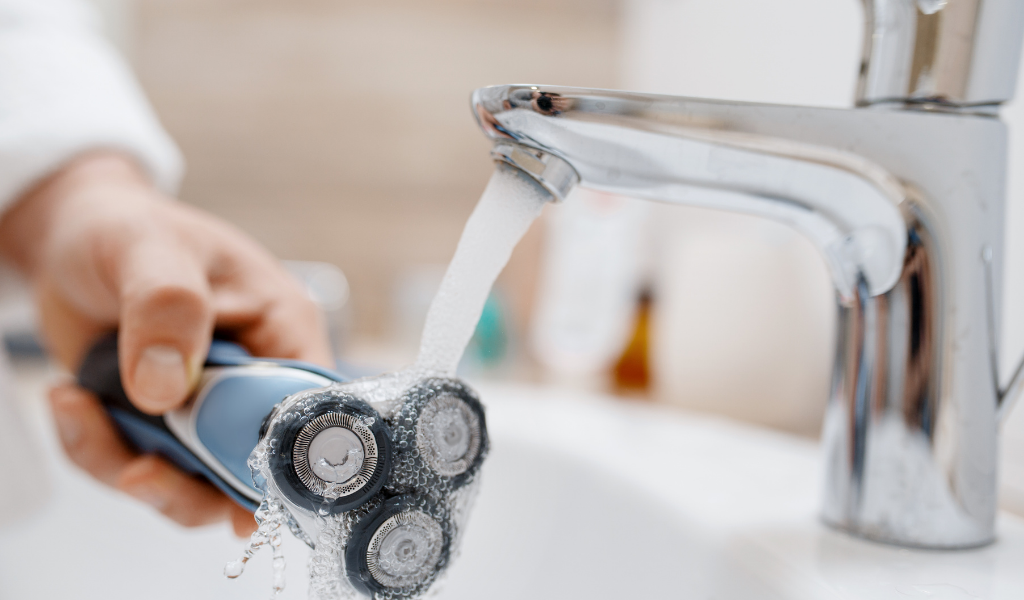
Properly caring for a razor can also help prevent razor bumps. Here are some keys to razor care that will help to prevent razor bumps:
No matter what type of razor you choose, keeping it clean and protecting the blades before, during, and after use can help reduce razor bumps.
Now you know how to choose a razor and how to care for it. These two steps can reduce the burden of razor bumps. If you’ve tried changing your razor but still battle razor bumps, it might be time to talk to a doctor. In some cases, razor bumps can be severe, or lead to more serious conditions.
To talk with one of the top board-certified physicians, book an appointment below. Our caring experts can help answer your skin questions.
Disclaimer: The contents of this article are for informational purposes only and do not constitute medical advice. The information, graphics, and images on this site are not intended to substitute diagnosis or treatment by a medical professional. Always seek the advice of a licensed physician for any questions you may have regarding a specific condition.
Tshudy, M. & Cho, S. (2021, January 30) Pseudofolliculitis barbae in the U.S. military, a review. Military Medicine, Volume 186, Issue 1-2. Retrieved from https://doi.org/10.1093/milmed/usaa243
Nussbaum D. & Friedman A. (2019, March) Pseudofolliculitis barbae: A review of current treatment options. Journal of Drugs in Dermatology : JDD, 18(3). Retrieved from https://europepmc.org/article/med/3090932
Eske, J. (2019, July 29). Causes and remedies for itchiness after shaving. Medical News Today. Retrieved from today.com/articles/325886#causes">https://www.medicalnewstoday.com/articles/325886#causes
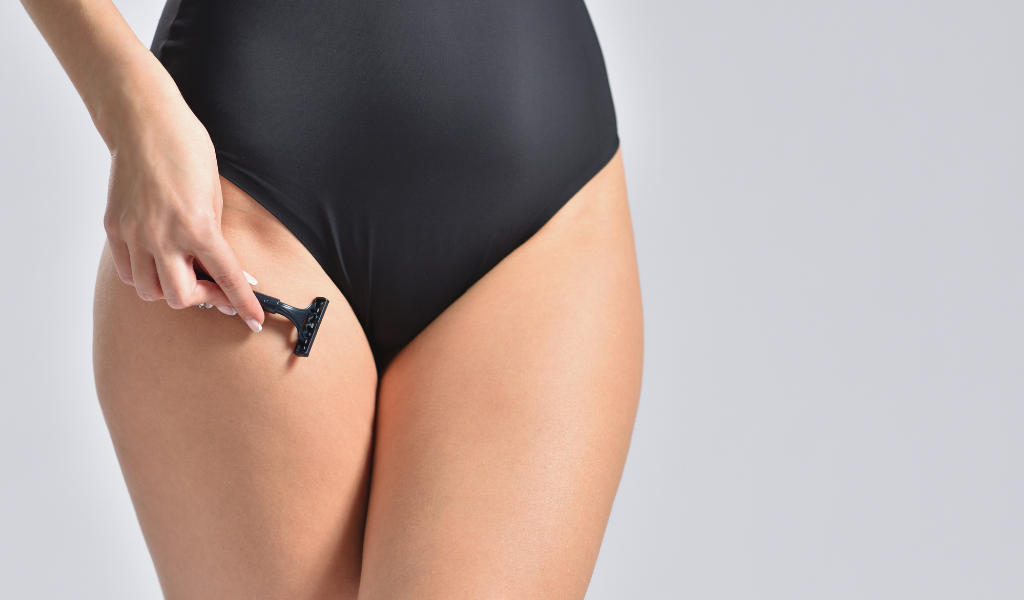
Bumps on the bikini line after shaving are common. Razor bumps happen when irritated hair follicles become swollen, itchy, or even infected after hair removal.
To avoid bikini line bumps, it is important to know what causes them. Then, taking special care to protect the skin can go a long way in preventing problems. In most cases, bikini line bumps are bothersome but harmless.
Here are some tips to stop this skin care problem and what to do when it becomes serious.
The bikini area refers to the skin and hair next to the genitals. These areas are bared when wearing a bikini. For looks and comfort, many women choose to shave or wax there.
Pubic hair removal is common. About 83% of women report grooming their bikini areas. Understanding hair growth in this area is the first step to preventing skin problems.
Although most women admit trying to eliminate some (or all) of the hair in the bikini area, it is there for a couple of reasons, such as:
Shaving around the genitals can lead to ingrown hairs, skin infections, even painful cuts or burns. Hair removal can seriously irritate a bikini line. So it is important to consider the risks and benefits when choosing how to care for this delicate area.
Individuals choose hair removal for many reasons, some cultural or even religious. When deciding to remove hair at the bikini line, these steps can help maintain healthy, good-looking skin.
Make these steps a part of the skin care regimen and you could see better results.
With these tips on prevention and a newfound understanding of why razor bumps start, you can avoid bikini line bumps now and forever.
And if you can't, talk with one of our board-certified physicians about what else you can do to eliminate his problem.
To talk with one of the top board-certified physicians, book an appointment now. Our caring experts can help answer your skin questions.
Disclaimer: This article is for informational purposes only. It does not constitute medical advice. The information, graphics, and images on this site are not intended to substitute diagnosis or treatment by a medical professional. Always seek the advice of a licensed physician for any questions you may have regarding a specific condition.
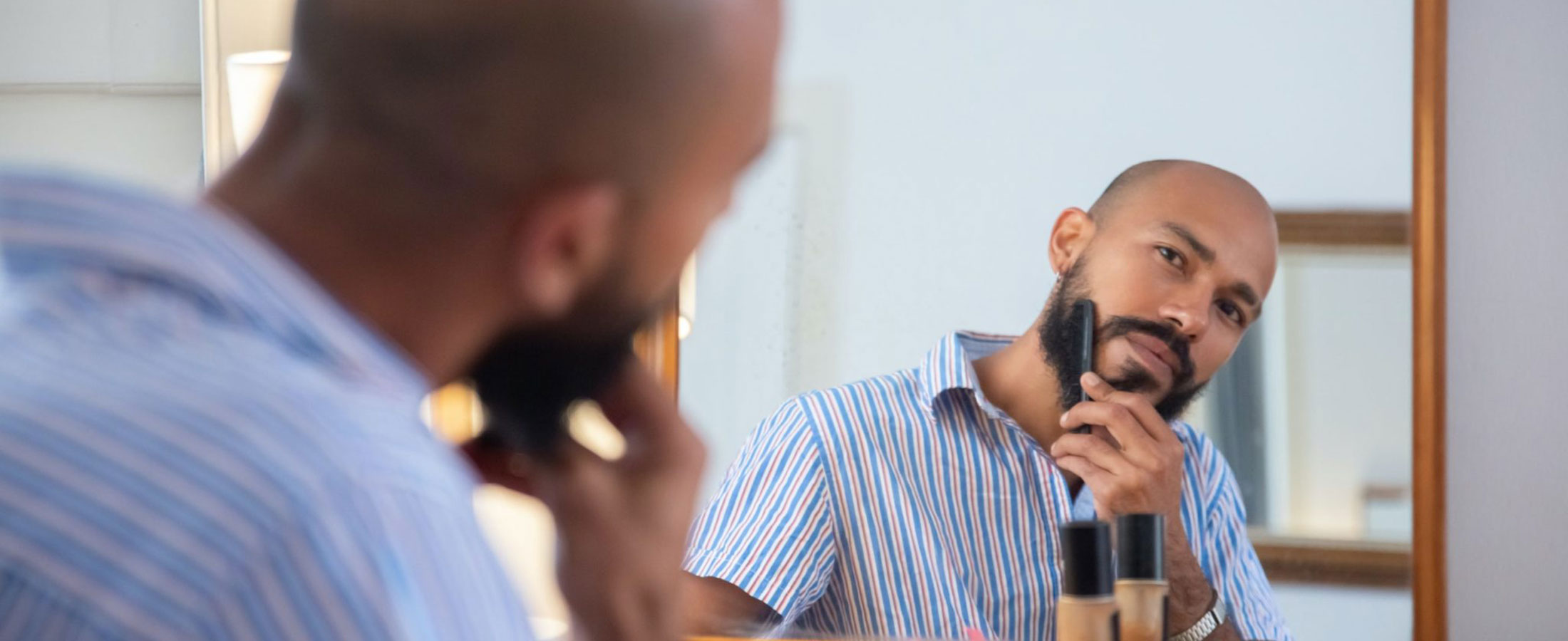
A shaving waiver is a type of medical release or exemption form. Men who have skin conditions may need this form for work.
Shaving waivers are also called “no-shave waivers.” They are for men with certain skin conditions. Sometimes shaving causes serious skin problems. A medical doctor can complete this release to show why a man should not be required to shave his face.
Why would an individual need a shaving waiver, and where can you get one?
The shaving waiver shows employers and supervisors of organizations that it would be unhealthy for a man to shave. A shaving waiver must be necessary to prove that an individual should not have to shave for medical reasons.
For some men, facial shaving causes:
According to to-dictate-the-terms-of-m/" rel="noreferrer noopener">Kennard Law P.C., “from a legal perspective, employers may require male employees to shave as long as it does not infringe on their civil rights or cause undue hardship.” For this reason, it may be necessary to show proof that shaving creates a problem for the individual.
Speak to a virtual doctor today about a shaving waiver!
Some men in sales or marketing, law enforcement, or sports may be required to shave their faces. Other jobs that require men to be clean-shaven include those where employees may be exposed to fire or hazardous chemicals and would be required to wear respirator equipment.
In the military, this waiver is also called a military shaving profile. The Department of Defense expects its male members to maintain zero visible facial hair, other than a neatly maintained mustache, when in uniform. This requirement stems from the five elements of dress and personal appearance: neatness, cleanliness, safety, uniformity, and military image.
In some cases, when shaving causes serious health concerns to the individual, this medical form may be necessary.
Do you need a shaving waiver? You can schedule a virtual doctor visit with one of our board-certified physicians about a shaving waiver.
We are now offering evening and weekend appointments. My Virtual Physician treats skin conditions and much more. Our caring experts provide telemedicine services for your healthcare needs, all from the convenience of your home.
If you have suggestions for other topics you want to read about, let us know! Don’t forget to follow us on social media.

Many women enjoy the feel of soft-shaven skin. But the red, itchy patches that come after can be a real pain. Razor bumps in sensitive areas like the bikini line are annoying. So how can men and women deal with razor bumps down there?
Razor bumps, technically called pseudofolliculitis barbae, are a common skin complaint. Fortunately, they are preventable to some degree. By protecting skin before, during, and after hair removal, men and women can minimize the effects of razor bumps.
If you're wondering how to save your skin, check out these tips to steer clear of painful razor bumps.

Razor bumps are an uncomfortable sign of skin irritation. For those who already have them, the first step is to keep them from getting worse.
A compress made with salt water can also help soothe the skin. Saltwater cleans and heals the skin by osmosis. To make a "saline soak" at home:
Consider adding a couple of drops of an essential oil, like tea tree oil, to the saline solution for more relief.
When bumps don't go away or become more painful, it may be best to see a doctor.
A physician can tell if the problem is razor bumps or may be something else. Some doctors use antibiotic gels, steroids, or retinoids to treat severe cases.
They say an ounce of prevention is worth a pound of cure. When it comes to razor bumps, it's very true.
Here's how you can lower your risk of getting razor bumps from shaving.
Find more tips on how to prevent razor bumps here.
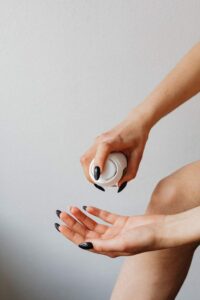
Taking care of skin before, during, and after hair removal can go a long way in preventing razor bumps.
If you've tried to treat pseudofolliculitis barbae yourself but find the situation getting worse, it may be time to check with a doctor.
Are you looking for a doctor near you to treat your sensitive issues? My Virtual Physician has board-certified physicians who can address gynecological and primary care problems via video visits.
If you would like to talk with a board-certified doctor, you can schedule your appointment online now. My Virtual Physician offers health screening, lab tests, and counseling to meet all of your healthcare needs.

Masks have become a permanent accessory for many U.S. workers. Unfortunately, facial hair makes masking difficult. Some workers required to wear personal protective equipment, like respirator masks, find it especially hard. You may even wonder, how can men with full beards wear N95 masks?
An N95 respirator mask is a protective device made to fit tightly against the face to filter 95% of particles from the air entering the nose and mouth. As a result, men with full beards cannot wear N95 masks safely or effectively. Facial hair that comes between the skin and mask edges prevents a tight fit and good seal.
So what can men do if they have facial hair but need respiratory protection? There are options for men in such situations. Read on to find out.
Many jobs require respiratory protection. Here are just a few of the workers that may be required to wear an N95 mask in on-the-job situations.
In many of these jobs, facial hair is not allowed. Therefore, tory?id=69916196" target="_blank" rel="noreferrer noopener">some men choose to shave their facial hair.
Unfortunately for some of these workers, going clean-shaven causes problems. Sometimes shaving causes adverse effects.
The face and neck are sensitive parts of the body. Facial shaving may result in some very uncomfortable skin conditions. Problems created by shaving may include folliculitis, painful skin infections, and hyperpigmentation. For men suffering from significant health conditions like these, limiting or even avoiding shaving may be necessary.
A shaving waiver, also known as a shaving profile or “no-shave waiver,” can help individuals with certain conditions. A shaving profile is a medical release or exemption form. The document, completed by a physician, explains why a man should not be required to shave his face due to health concerns.
Shaving waivers allow men to forgo shaving and get the right respiratory protection for them. Men with facial hair do not have to risk inhaling unsafe vapors.
Some respirator masks do not require a face seal. These types are a better option for bearded employees.
Specifically, positive-pressure respirators worn over facial hair or beards work to filter the air. A hood-and-helmet type mask uses continuous airflow to protect employees.
One example that is available to workers is called the Powered Air Purifying Respirator (PAPR) mask. This loose-fitting respirator uses a blower to pass air through a filter before sending it to the face. Typically, PAPR masks are lightweight and battery-operated. Also, PAPR masks do not require Fit-Testing.
One drawback is their cost. Most employees would not want to invest in their own PAPR. Those looking for a PAPR respirator can purchase a simple version online for around $100. However, some are upwards of $1000. Batteries and chargers may double the expense.
Although these masks are more costly, they offer superior protection. According to tomerics/" target="_blank" rel="noreferrer noopener">this article by the Center for Disease Control and Prevention (CDC), a PAPR mask may offer an Assigned Protection Factor (APF) of 1000, where an N95 respirator only has an APF of 10. The higher the protection factor, the safer it is.
The use of a PAPR mask does require a physician’s medical evaluation. It is a respirator, and therefore OSHA’s requirements to evaluate an employee before requiring the mask applies to this type.
Men with full beards can find respiratory protection that won’t cause health problems or skin conditions. The first step is a medical evaluation by a licensed physician.
Men interested in finding out if a PAPR mask or shaving waiver for their employer would be right for them should talk to a doctor.
My Virtual Physician now offers consultations for shaving waivers in some states. Fill out the contact form below to speak to one of our board-certified physicians about a shaving waiver.